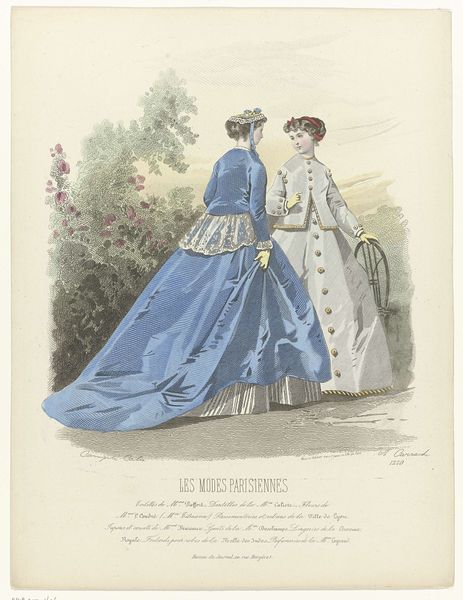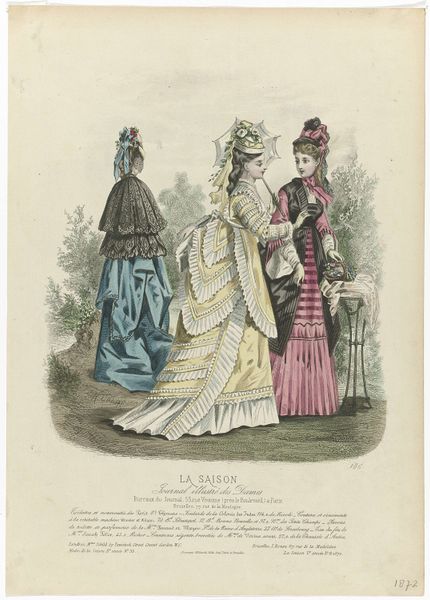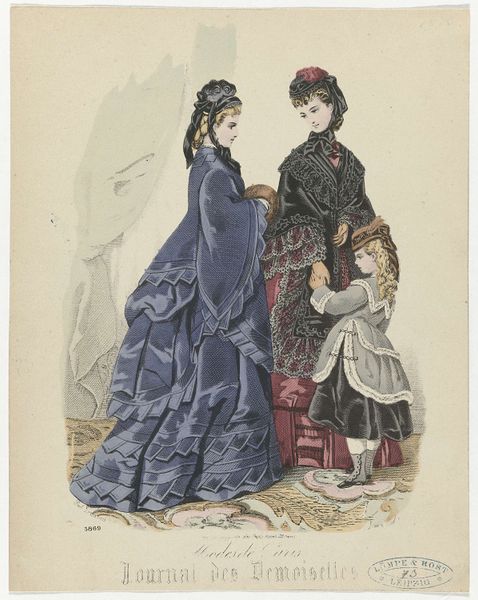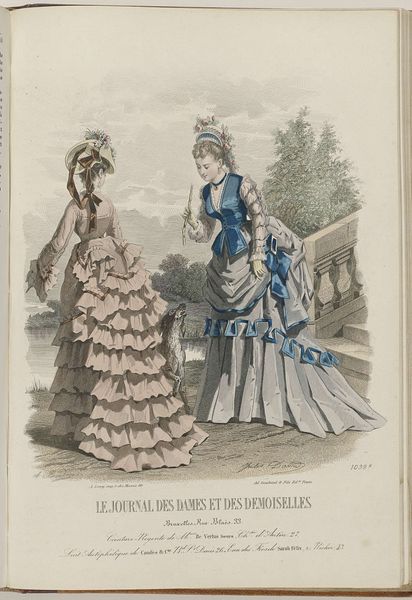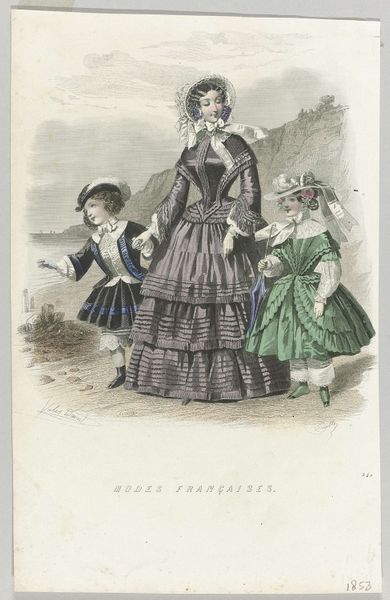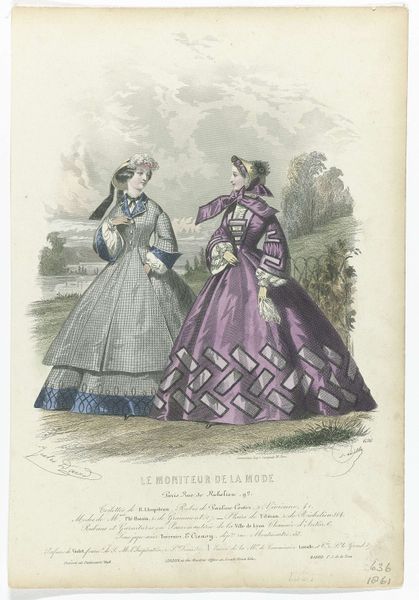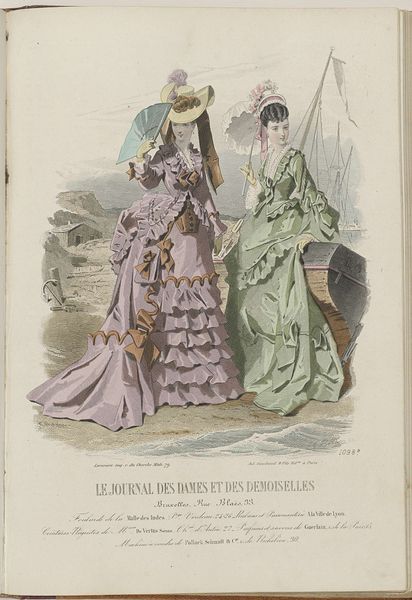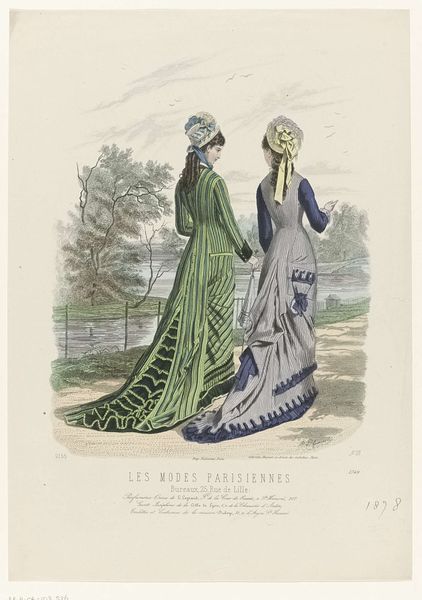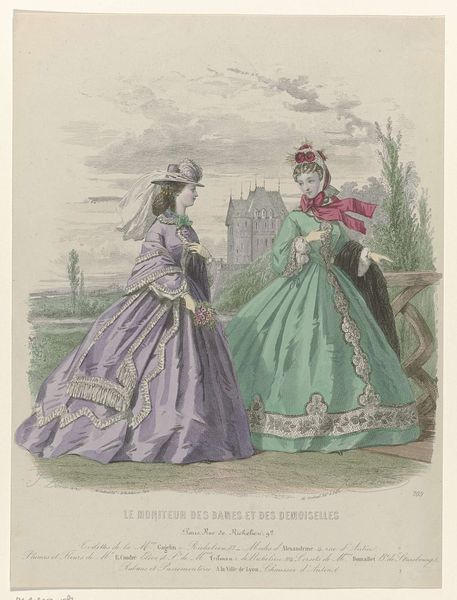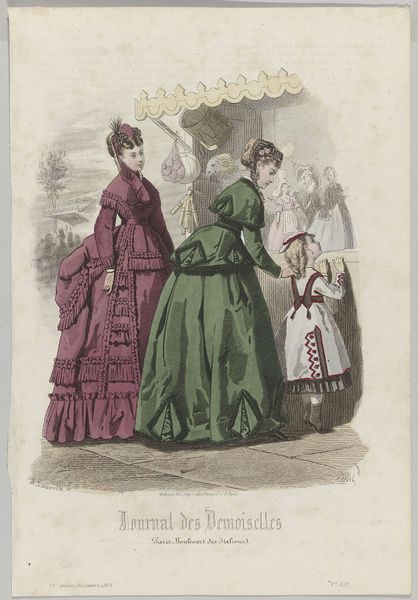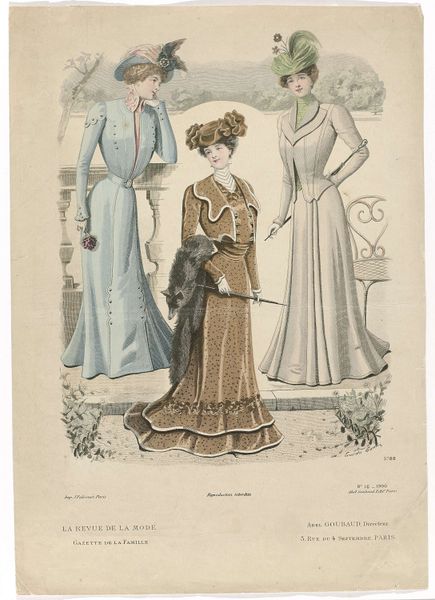
drawing, print, watercolor
#
drawing
# print
#
watercolor
#
watercolour illustration
Dimensions: height 271 mm, width 194 mm
Copyright: Rijks Museum: Open Domain
Curator: This intriguing image before us, entitled "An Explosion of Fashion Magazines," dates back to 1866 and presents a detailed watercolour illustration with elements of printmaking. It’s attributed to Carrache. Editor: It gives me such a peaceful, yet quietly absurd, feeling! Two elegant figures atop a... well, it looks like a mossy knoll. One’s gazing through what appears to be a spyglass! It is sort of humorous in tone to me. Curator: Yes, their positioning is rather striking. "Les Modes Parisiennes," as indicated at the bottom of the print, speaks volumes about the emerging fashion industry and the visual representation of women during the Second Empire. These images, circulating through magazines, did so much more than depict style. Editor: Fashion magazines – they’re like a looking glass into a particular moment. The details in their gowns! I am completely lost in the frills and details, this blue peaking from underneath this shapeless overcoat! What do you read into that? Curator: Well, blue gained significance historically with the Virgin Mary’s symbolic colour and began a shift toward high fashion. Remember, these magazines weren’t merely showcasing clothes; they were carefully constructing narratives around femininity, status, and aspiration, which the expanding middle classes absorbed quickly, imitating aristocracy. The woman with the spyglass could indicate foresight, looking towards that change that was stirring on the horizon. Editor: "Narratives" feels right. These aren’t portraits. They’re… stories waiting to happen! I find myself inventing backstories for these women – are they rivals? Friends sharing a secret? Escaping? Is the woman staring into a vast void symbolic of the age, a deep chasm in human feeling and culture that they desperately search for an answer in the dark? Maybe, it isn't all too serious, huh? Curator: I find myself questioning how these fashion plates shaped women's perceptions of themselves and each other. In the construction of an idealised Parisienne figure. They really underscore fashion’s cultural capital during this pivotal point in social change and expansion. Editor: It feels strange, seeing something so clearly designed to be desirable, and then filtering that intention through all of our modern understandings and complexities. You almost can't avoid reading your own experience into them and how women see themselves today! The ghost of that experience now imprinted into our interpretation and interaction of it, now... Well, It makes it somehow more poignant, more precious. Curator: Precisely. And considering the sociopolitical forces at play during the late 19th century, it reminds us that even seemingly frivolous images contain critical threads of identity, gender, and economic structures. Thank you for sharing your vision.
Comments
rijksmuseum about 2 years ago
⋮
Starting from the 1850s, fashion magazines became more affordable and acquired a wider readership. The invention of the sewing machine around 1850 made it easier for people to make their own clothes. Ready-made garments were now also on offer, with fashion plates providing vendor addresses, such as the Maison Gagelin in Paris.
Join the conversation
Join millions of artists and users on Artera today and experience the ultimate creative platform.
